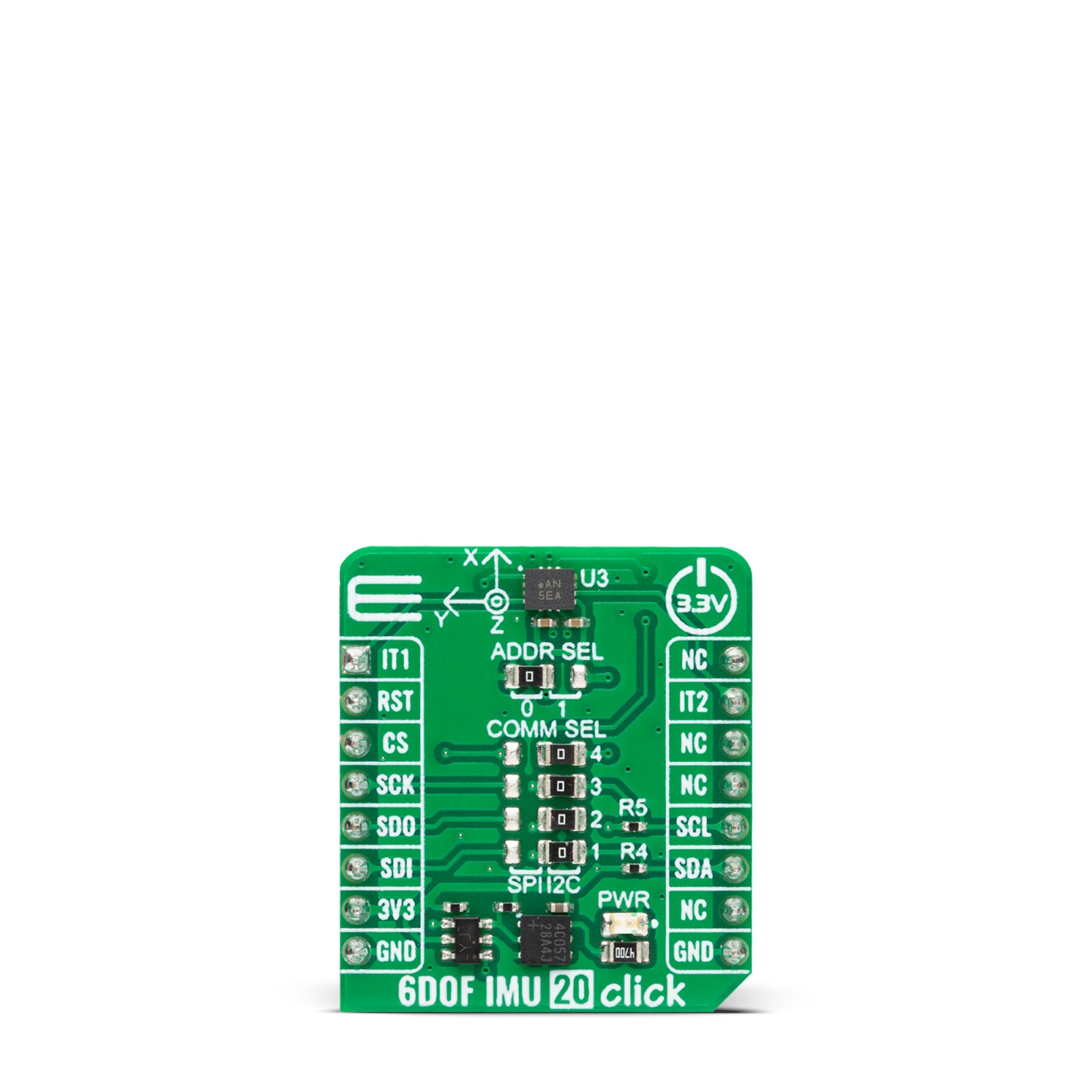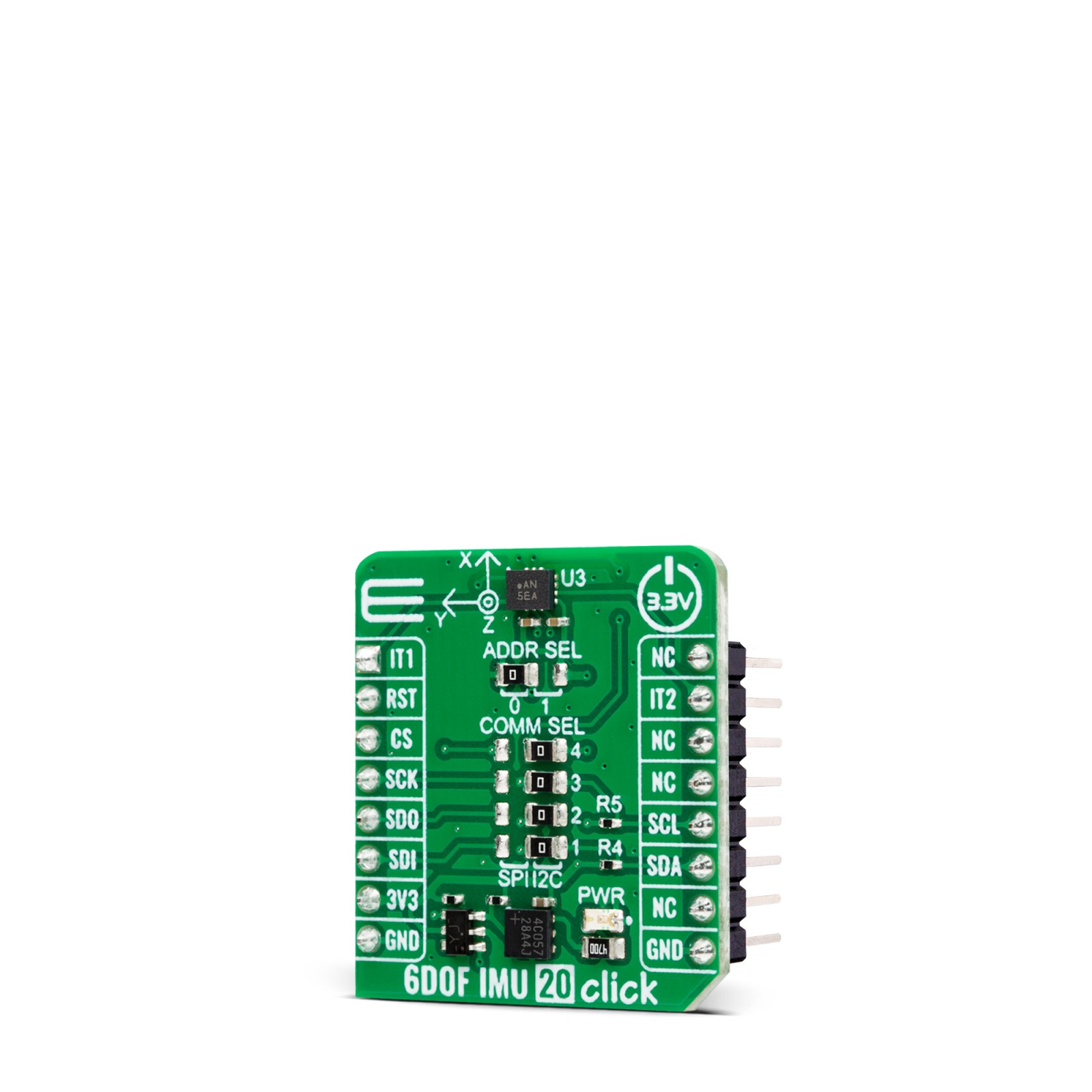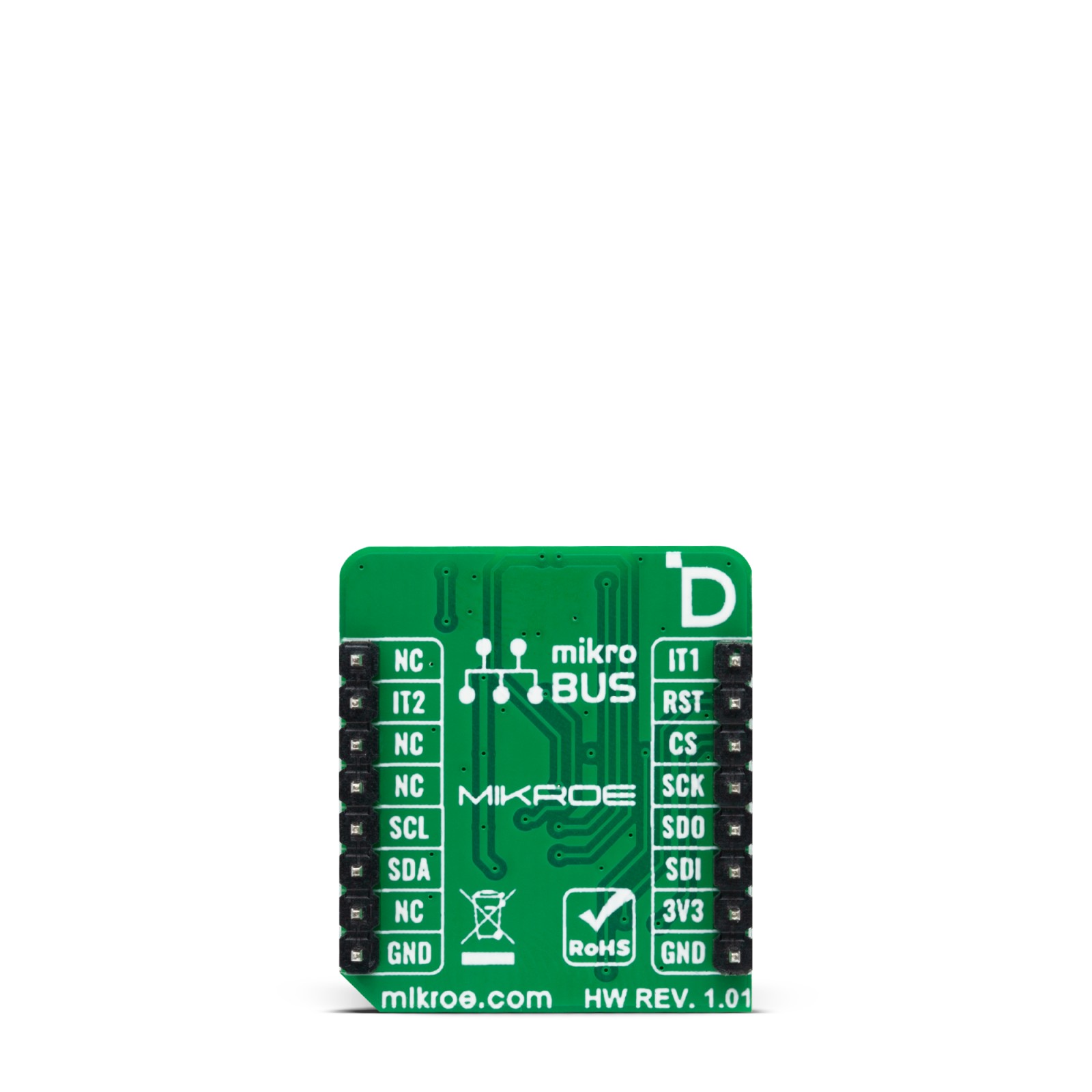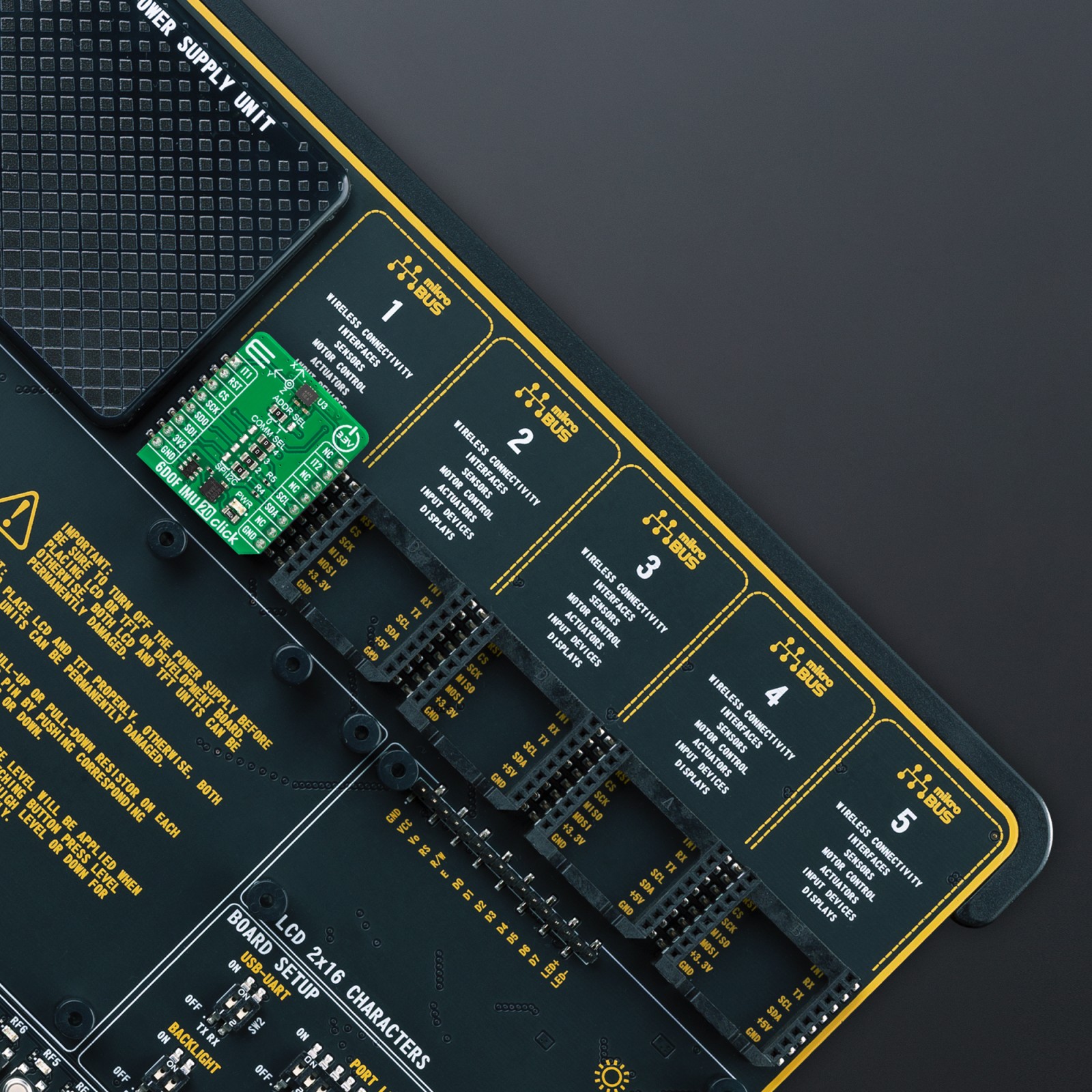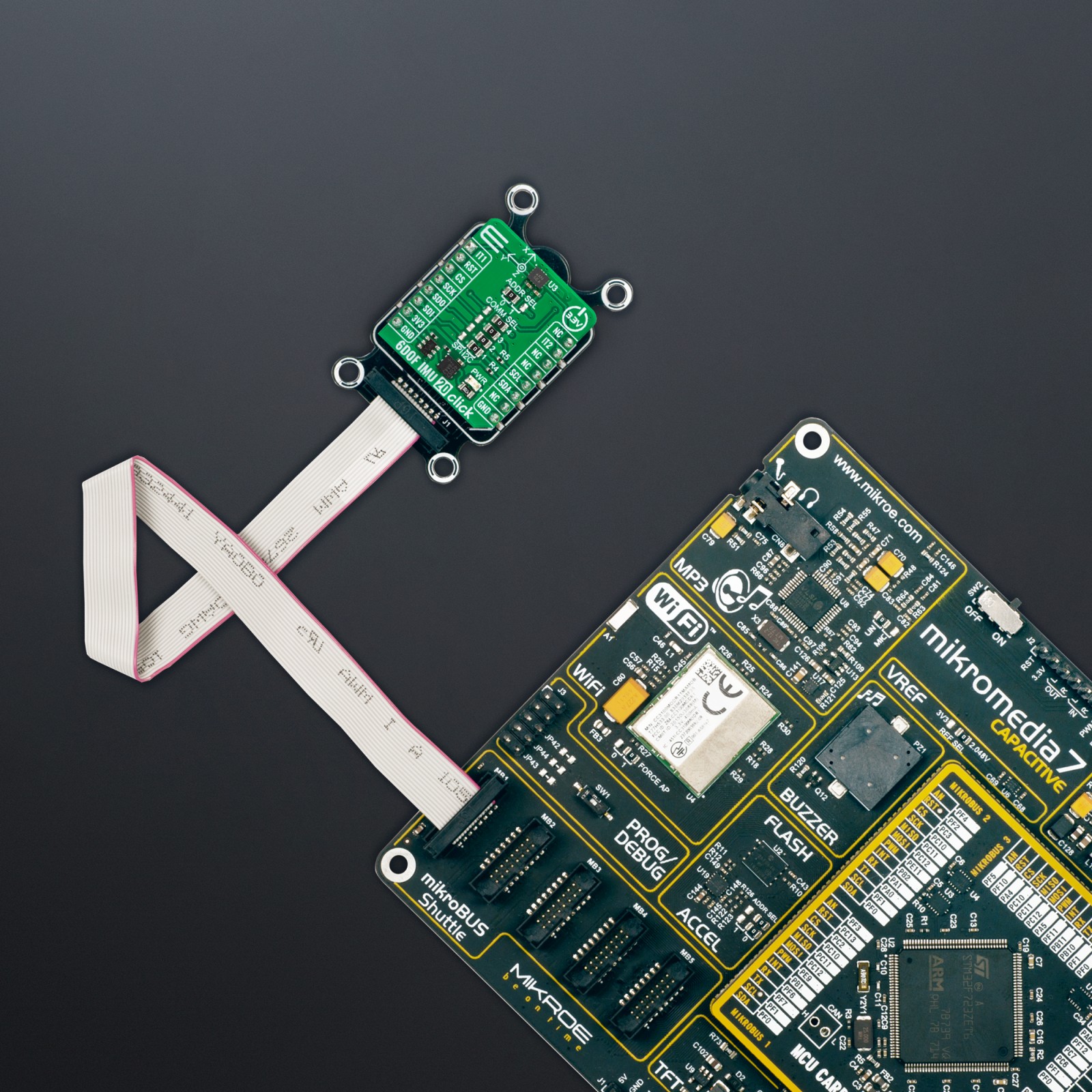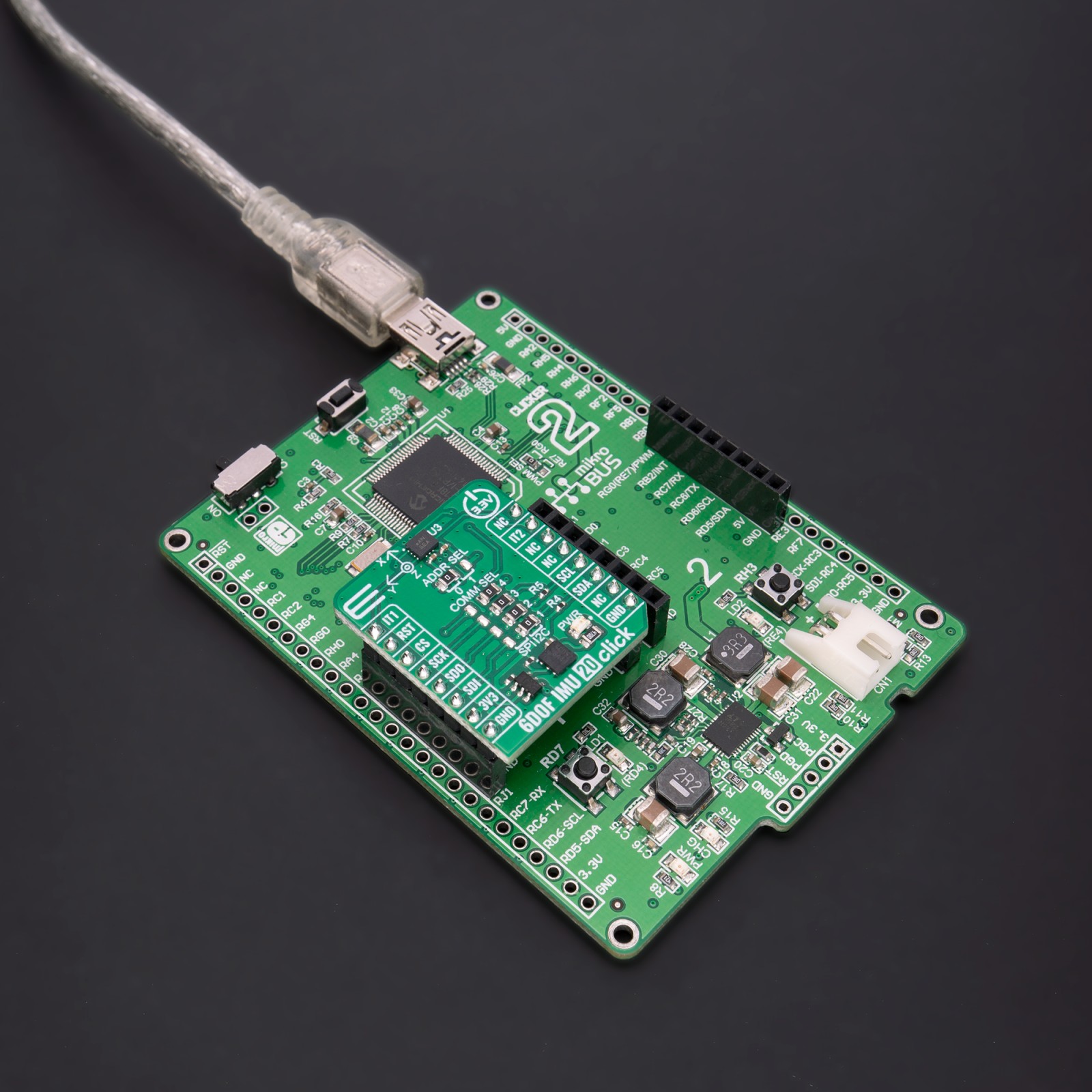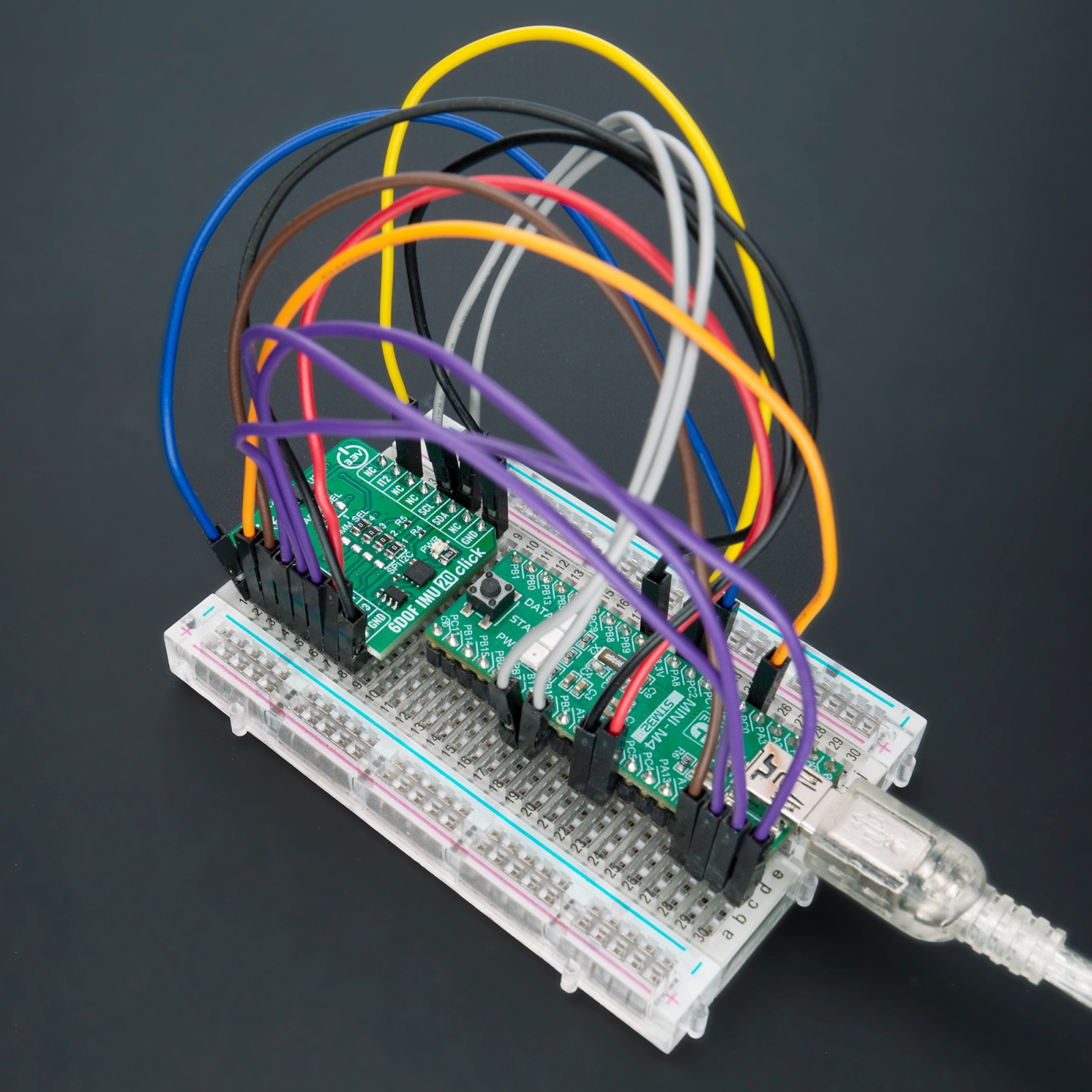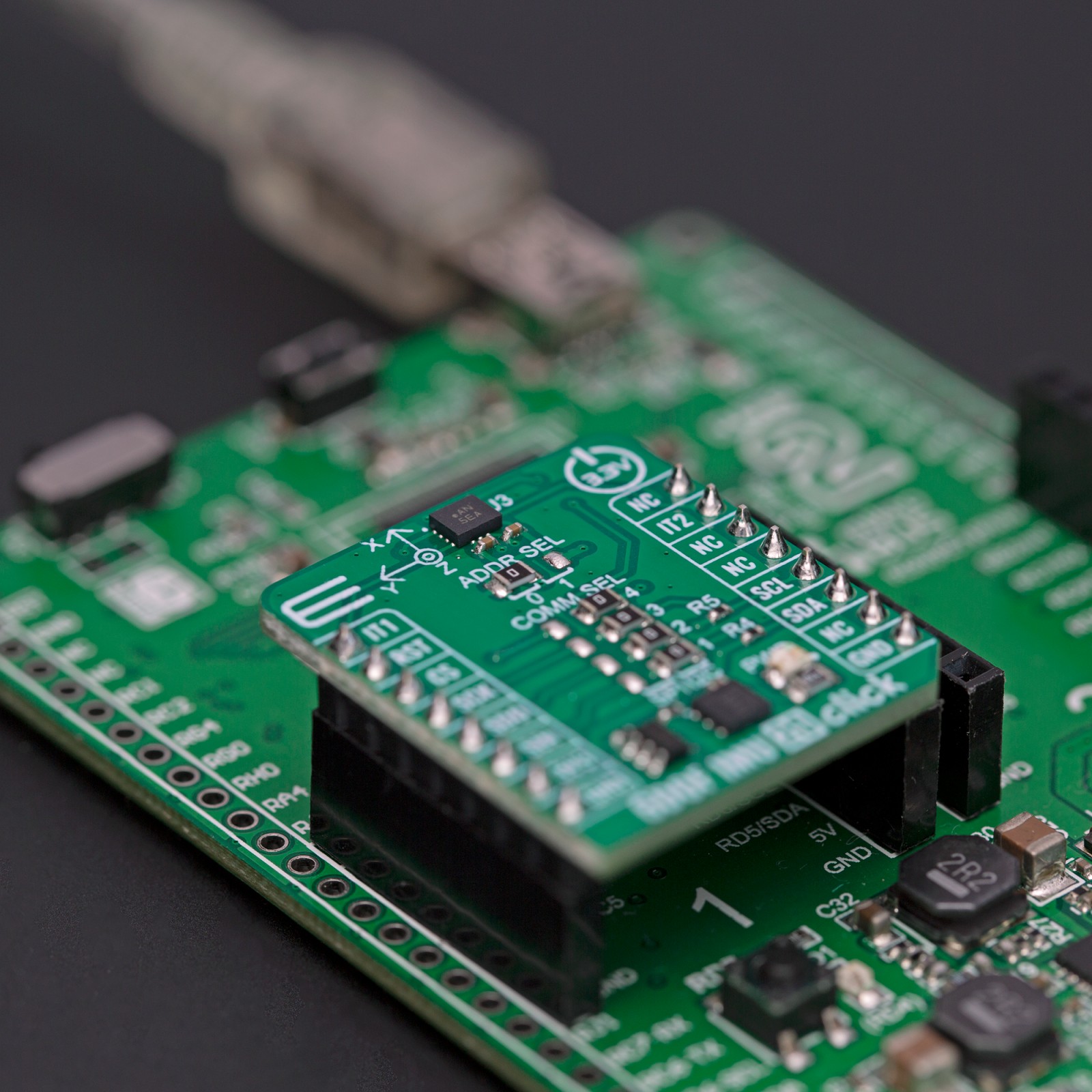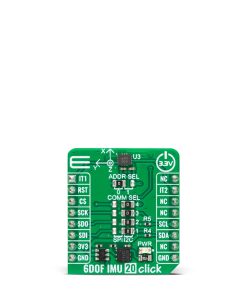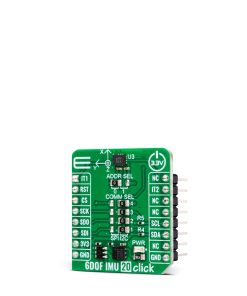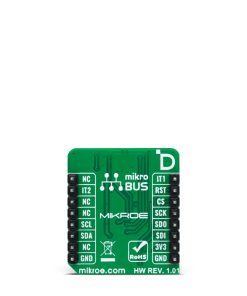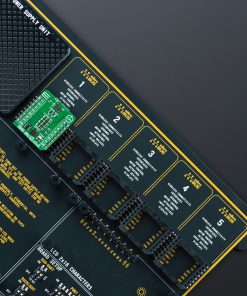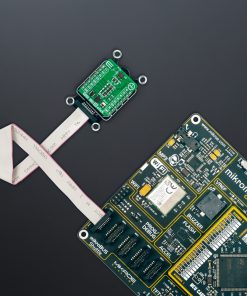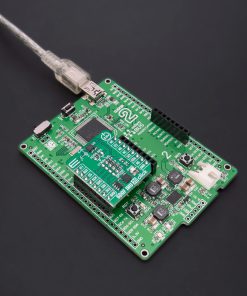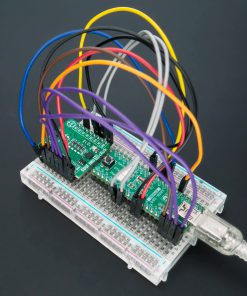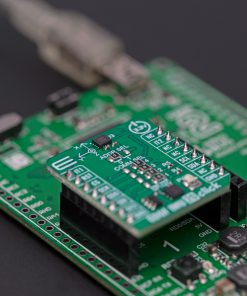6DOF IMU 20 Click
R370.00 ex. VAT
6DOF IMU 20 Click is a compact add-on board with a 6-axis inertial measurement unit. This board features the BMI323, a high-performance, low-power inertial measurement unit (IMU) from Bosch Sensortec. The BMI323 combines precise acceleration and angular rate (gyroscopic) measurement with intelligent integrated features triggered by motion. Besides 16-bit triaxial gyro and accel with a configurable range and host interface that supports SPI and I2C serial communication, it also features 2Kb-byte FIFO that can lower the traffic on the serial bus interface. On-chip interrupt engine and integrated smart features make this Click board™ an excellent choice for always-on applications like motion detection, step detector, plug ‘n’ play step counter, orientation and flat detection, single/double/triple tap detection, and many more.
6DOF IMU 20 Click is fully compatible with the mikroBUS™ socket and can be used on any host system supporting the mikroBUS™ standard. It comes with the mikroSDK open-source libraries, offering unparalleled flexibility for evaluation and customization. What sets this Click board™ apart is the groundbreaking ClickID feature, enabling your host system to seamlessly and automatically detect and identify this add-on board.
Stock: Lead-time applicable.
| 5+ | R351.50 |
| 10+ | R333.00 |
| 15+ | R314.50 |
| 20+ | R302.66 |

